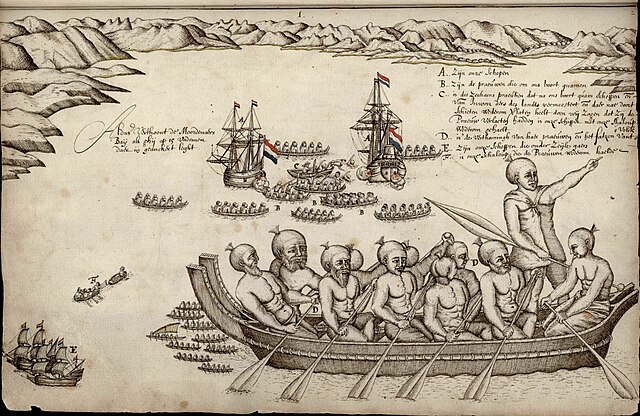The Wairau Affray of 17 June 1843, also called the Wairau Massacre and the Wairau Incident, was the first serious clash of arms between British settlers and Māori in New Zealand after the signing of the Treaty of Waitangi and the only one to take place in the South Island. The incident was sparked when a magistrate and a representative of the New Zealand Company, who held a duplicitous deed to land in the Wairau Valley in Marlborough in the north of the South Island, led a group of European settlers to attempt to arrest Ngāti Toa chiefs Te Rauparaha and Te Rangihaeata. Fighting broke out and 22 British settlers were killed, nine after their surrender. Four Māori were killed, including Te Rongo, who was Te Rangihaeata's wife.
Wairau Memorial in Tuamarina cemetery
"Blenkinsop's Cannon" outside the offices of Marlborough District Council in Blenheim
Ngāti Toa chief Te Rauparaha
The scene of the Wairau Affray near Tuamarina
Māori are the indigenous Polynesian people of mainland New Zealand. Māori originated with settlers from East Polynesia, who arrived in New Zealand in several waves of canoe voyages between roughly 1320 and 1350. Over several centuries in isolation, these settlers developed their own distinctive culture, whose language, mythology, crafts, and performing arts evolved independently from those of other eastern Polynesian cultures. Some early Māori moved to the Chatham Islands, where their descendants became New Zealand's other indigenous Polynesian ethnic group, the Moriori.
Māori performing a haka (2012)
Early Archaic period objects from the Wairau Bar archaeological site, on display at the Canterbury Museum in Christchurch
Model of a pā (hillfort) built on a headland. Pā proliferated as competition and warfare increased among a growing population.
The first European impression of Māori, at Murderers' Bay in Abel Tasman's travel journal (1642)








